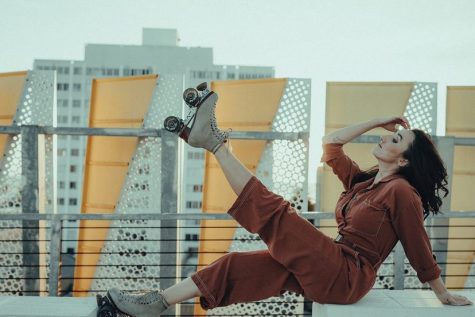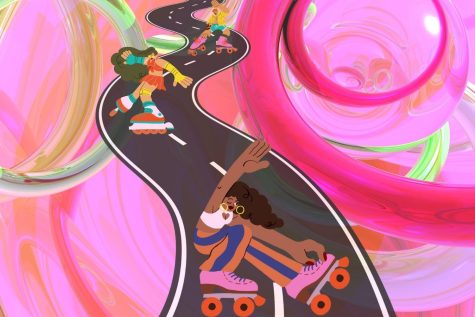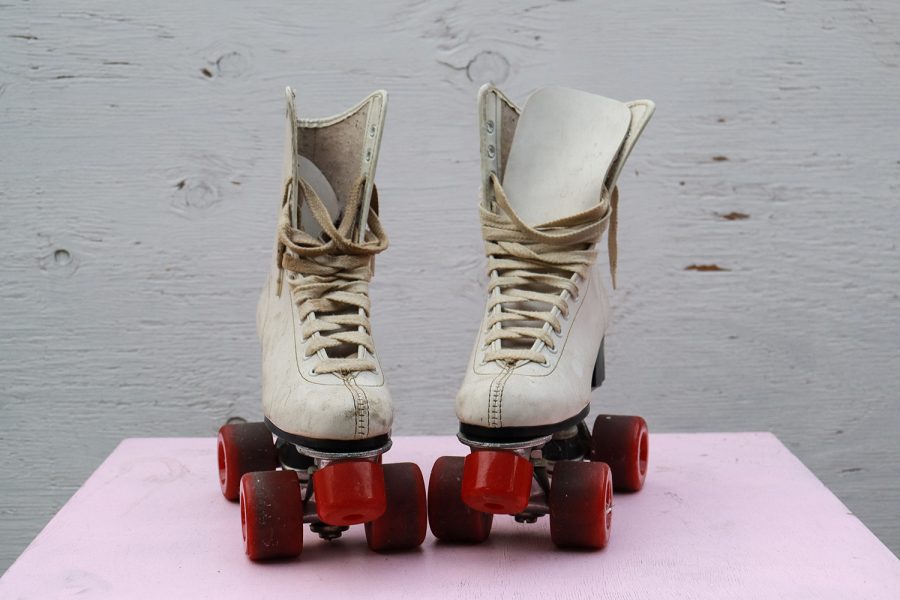The fall and rise of roller-skating
Deena Jenkins’ pair of roller skates that she used as a child when she would skate at her local roller rink almost every weekend. She continued the tradition with her children until Skate Depot, their local rink in Cerritos, Calif., closed down.
May 19, 2022
In 2020, Northridge’s Skateland roller-skating rink officially closed down, eventually being converted into a homeless shelter. Although this meant opportunities for one community, it also meant a loss for another.
Just like Skateland, many other roller rinks across the United States have closed down. Golden Skate in San Francisco, California, one of the most popular roller rinks in the Bay Area, closed in the spring of 2022.
One can even keep track of defunct roller rinks across the world with the website Dead Rinks. Created by Mark Falso in 2018, the website archives roller rinks that are no longer around. From what the avid roller skater observed, the mandatory business closures during the COVID-19 pandemic has been the most common reason behind the shuttering of many rinks today, according to Falso.
With a decline in roller rinks across the country, the popularity of the activity has fluctuated. The amount of roller skaters in the U.S. decreased from 19.8 million in 2006 to 11.5 million by 2017, according to Statista. It was especially exacerbated by the Great Recession in 2008.
Nicole Fiore, a coach and award-winning roller skater, took note of the downfall of roller-skating rinks.

“My entire life … roller rinks were always kind of dying throughout my entire life,” Fiore said, looking back on the number of rinks she grew up around that closed.
Some experts in the roller-skating community, such as Fiore, believed the decline stemmed from the economic hardship of funding these rinks. One of the ways that roller rinks made money was through competitive skating, according to Fiore.
“What drove the rinks was not just the recreational skating, it was also the competitive and the competitive clubs that paid to have the rinks operate,” Fiore said.
Before the widespread closures of roller rinks, roller-skating used to be a popular pastime activity in the U.S. From the “Golden Age” of roller-skating between the 1930s and 1950s to the “Roller Disco” era between the 1970s and 1980s, the activity saw multiple booms in popularity throughout the decades.
The history of roller-skating is mostly told through personal stories on blogs. Writing about her experience working with a group of seniors, Michelle Trent recalled the time they reminisced about their roller-skating days. Curious to learn more about the history of the activity, the blogger learned that roller-skating became increasingly popular as the Great Depression began winding down in the late 1930s. This marked the beginning of roller-skating’s Golden Age.
During the Roller Disco era of roller-skating between the 1970s and 1980s, the sudden boom of popularity led to the creation of National Roller Skating Month by former President Ronald Reagan in 1983.
Roller-skating even became a culturally significant activity for Black people throughout the civil rights movement of the 1960s.
The recreational activity eventually intersected with the fight for civil rights when Ledger Smith traveled 10 days on skates from Chicago to the Lincoln Memorial to attend Martin Luther King Jr’s “I Have a Dream” speech in 1963. As a form of protest, the semi-professional roller skater wore a sign printed with the word “Freedom” the whole journey there.
Over 50 years later, roller-skating is being used as a medium of protest to raise concerns about today’s racial injustices. In 2020, dozens of roller skaters united in a skate rally in support of the Black Lives Matter movement.

Movies like “Roll Bounce,” “ATL,” “United Skates,” and “Roller Dreams” have also depicted the significance that roller-skating has had in Black culture.
Kim Brown grew up roller-skating as a part of the Black community. She has dedicated her social media to documenting her journey as someone who roller-skates recreationally every day. To her, skating is an important part of the Black community.
“It combines the things that are important in Black culture like music and community,” said Brown.
Brown said she started skating during the pandemic as a fun way to get out of the house and to exercise. According to Brown, it rose to popularity because it was an activity that people could do individually during the pandemic when social distancing was encouraged.
Despite some believing that the COVID-19 pandemic was detrimental to the industry, a revival of the activity itself may have been spurred. The rising sales of roller skates, roller-skating TikToks, as well as a spike in Google searches for roller skates all indicate that there’s an increasing interest in the activity from individuals.
From the individualism of the hobby to the diversity, there are various reasons why the pastime may be rising in popularity once more.
“It doesn’t matter who you are, or what you look like, or where you come from,” said Fiore. “Skating is one of the only sports that is so inclusive, you don’t need a lot of money to start it and you can skate anywhere.”
